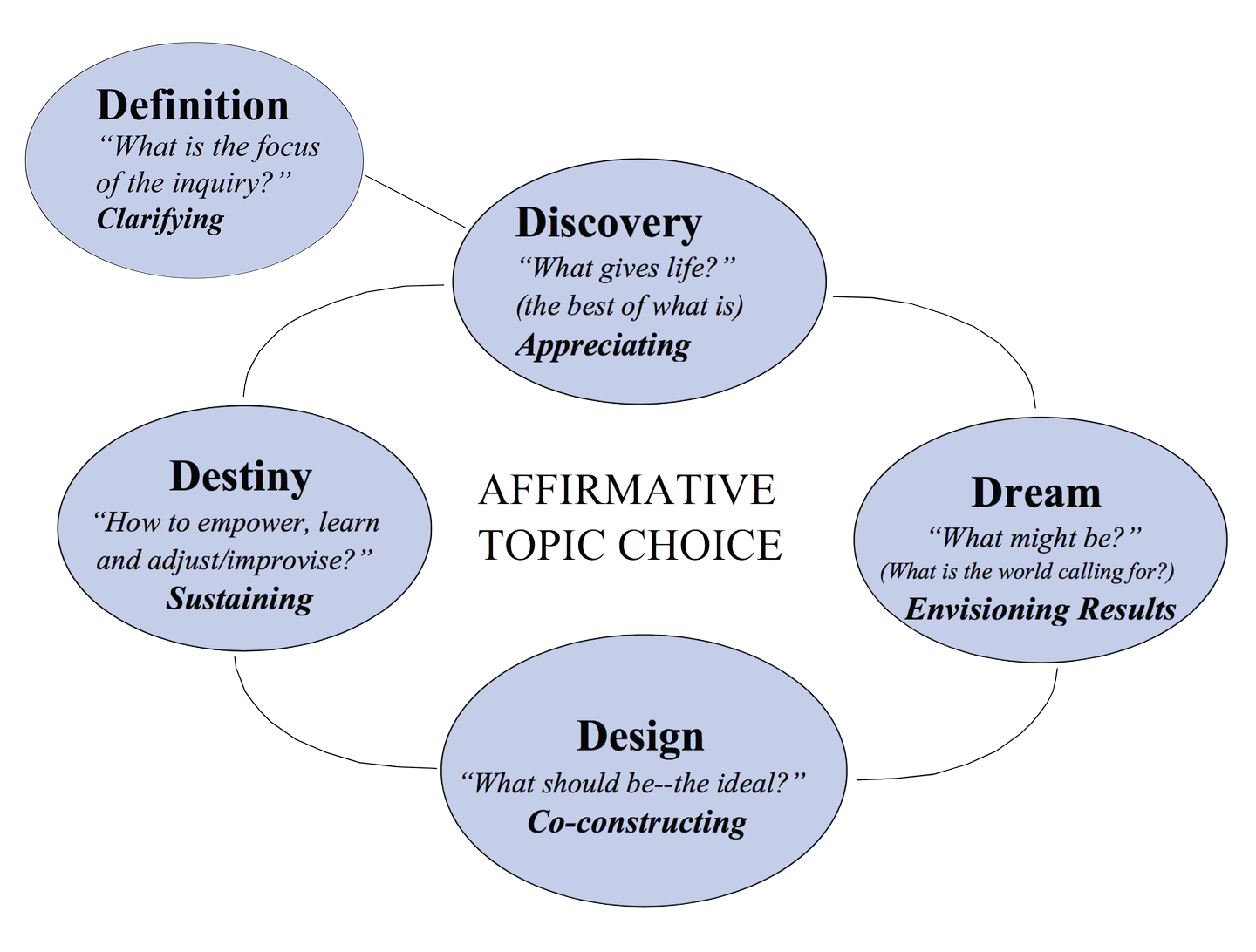
Human systems - teams, organizations, and people -move in the direction of what they study, what they focus on, and what they talk about with regularity.
― Diana Whitney
Appreciative Inquiry (AI) - developed by David Cooperrider - is a theory, methodology, and process of organizational and social change that grew out of the fields of organizational management, development, and action research. Appreciative Inquiry is commonly called an “asset-based” or “strengths-based” approach to systems change because it emphasizes positive idea generation over a traditional “deficit-based” approach. The model utilizes questions and dialogue to help participants uncover existing assets, strengths, advantages, or opportunities in their communities, organizations, or teams, and then collectively work toward developing and implementing strategies for improvement.
While Appreciative Inquiry takes many forms, and the approach has been widely adapted for different purposes across the globe, a standard model has emerged in the AI community over the past three decades. The original Appreciative Inquiry framework consisted of four steps—called the 4D Cycle—and five principles, but some practitioners later recognized a fifth step, leading to the creation of a 5D Cycle. For comprehensiveness, the 5D Cycle is presented and described here.
What is an Appreciative Inquiry Summit?
“An Appreciative Inquiry Summit is a large group planning, designing, or implementation meeting that brings a whole system of internal and external stakeholders together in a concentrated way to work on a task of strategic, and especially creative, value.” - David Cooperrider
AI Summits can be used with both small (about 25 persons) and large groups (over 1000) of participants alike.
An AI Summit is designed to flow through the Appreciative Inquiry 5-D Process of Defining, Discovering, Dreaming, Designing, and Delivering (Destiny).
The participants’ list for an AI Summit is by design diverse and inclusive of all the organization’s stakeholders – employees, customers, suppliers, and community members.
Each AI Summit Design draws people together for a unique purpose and task focus. Each organization has unique sets of relationships within the company and among stakeholders. Each organization has a unique and diverse cultural and geographical mix of people. Each organization has a unique way(s) of expressing its most precious values, honoring relationships, and making meaning and decisions.
Through this process:
Summits can effectively serve multiple purposes such as organizational development, community development, strategic planning, future search, public policy formulation, conflict management and peace-building and action research.
Summits create an organizational climate characterized by positive energy and cooperative behavior.
Summits foster empowerment of previously disenfranchised groups.
Summits help in building and nurturing relationships and cooperation among diverse groups of people involved in high-stake, high-innovation work


